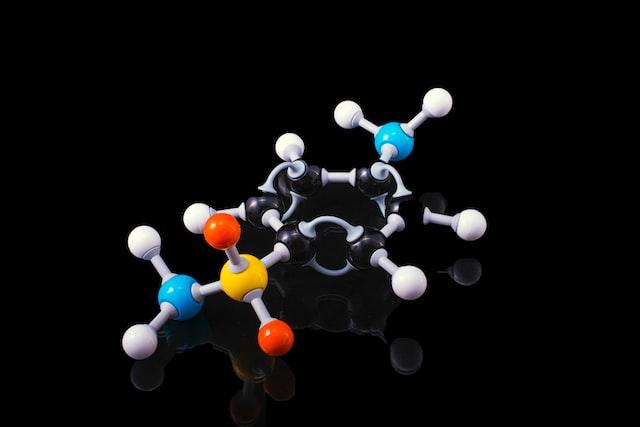
The atomic mass is composed of the protons, neutrons and electrons in an atom. To calculate it, we add up all these particles’ masses: one proton equals 1,836 electrons.
Generally speaking, since electrons don’t affect the atomic mass to a great degree, they’re omitted from this calculation.
Atomic mass can be a confusing concept, but it’s important to understand what it means before trying to calculate it.
There are different ways to find atomic mass depending on the information you have available, so choose the method that makes the most sense for your situation.
How can we calculate atomic mass?
There are three main ways to calculate atomic mass. It includes:
Finding the sum of protons and neutrons in an atom
The atomic mass of an element is the sum of the number of protons and neutrons in its nucleus.
This value can be determined using a variety of methods, including mass spectrometry and nuclear magnetic resonance spectroscopy.
The atomic mass can also be calculated by measuring the frequency of electromagnetic radiation emitted by the atom.
The most common unit for atomic mass is the dalton, also known as the unified atomic mass unit (u).
One dalton is approximately equal to the mass of a proton or neutron. The atomic mass of an element can vary slightly due to the presence of different isotopes.
For example, hydrogen has three isotopes: protium (1H), deuterium (2H), and tritium (3H). The average atomic mass of hydrogen is 1.0079 u, which takes into account the different abundance of each isotope.
Using the periodic table
A periodic table is a valuable tool for chemists. It not only lists the elements in order of increasing atomic number, but it also provides crucial information about each element.
For example, the atomic mass of an element is listed on the periodic table. This value is usually given in daltons (u) or grams per mole (g/mol). The atomic mass of an element can vary slightly due to the presence of different isotopes.
For example, hydrogen has three isotopes: protium (1H), deuterium (2H), and tritium (3H).
The average atomic mass of hydrogen is 1.0079 u, which takes into account the different abundance of each isotope.
A periodic table is an essential tool for anyone working with chemicals, and it should be consulted frequently.
Calculating the mass of an atom
The mass of an atom can be calculated by adding up the masses of its protons, neutrons, and electrons. The mass of an electron is 0.0005485799 u, and the mass of a proton is 1.007276 u.
The mass of a neutron is 1.008664 u. The atomic mass of an element can be calculated by adding up the masses of its protons and neutrons.
For example, the atomic mass of carbon is 12.0107 u. T
his value can be determined using a variety of methods, including mass spectrometry and nuclear magnetic resonance spectroscopy.
The atomic mass can also be calculated by measuring the frequency of electromagnetic radiation emitted by the atom.
Read also: What Happens To an Electron When Light Shines On It
What is the formula for calculating atomic numbers?

The formula for calculating atomic numbers is:
number of protons + number of neutrons + number of electrons
For example, the atomic number of carbon is 6. This can be determined by adding the number of protons (6), neutrons (6), and electrons (6). The total comes to 18.
The atomic number of an element is the number of protons in its nucleus.
This value can be determined using a variety of methods, including mass spectrometry and nuclear magnetic resonance spectroscopy.
Read also: Who Invented Math
What is the difference between atomic mass and atomic weight?
Atomic mass and atomic weight are terms that are often used interchangeably, but there is a subtle difference between them.
Atomic mass
Atomic mass is the mass of an atom, while atomic weight is the average mass of an atom.
The atomic weight takes into account the different isotopes of an element, while the atomic mass does not.
For example, the atomic mass of carbon is 12.0107 u, while the atomic weight of carbon is 12.011 u.
This means that the atomic weight takes into account the different isotopes of carbon, while the atomic mass does not.
Atomic weight
Atomic weight is the average mass of an atom, while atomic mass is the mass of an atom.
The atomic weight takes into account the different isotopes of an element, while the atomic mass does not.
For example, the atomic weight of carbon is 12.011 u, while the atomic mass of carbon is 12.0107 u.
This means that the atomic weight takes into account the different isotopes of carbon, while the atomic mass does not.
Read also: Who Invented Numbers
The takeaway
Atomic mass is the mass of an atom, while atomic weight is the average mass of an atom. The difference between them is that the atomic weight takes into account the different isotopes of an element, while the atomic mass does not.
When working with chemicals, it is important to consult a periodic table in order to find the atomic masses of the elements. These values can be used to calculate the mass of an atom or the atomic weight of an element.



